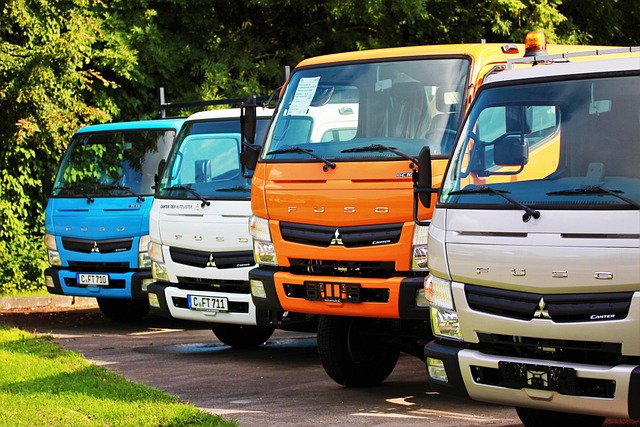Looking to register your car in California? This comprehensive guide walks you through every step of the process. From understanding the basic requirements to performing crucial VIN verification, we cover it all. Learn how to gather essential documents, navigate the DMV, and ultimately receive your California registration certificate. By following these clear instructions, you’ll streamline a typically complex task.
- Understanding the California Car Registration Process
- Gathering Necessary Documents for Vin Verification
- Performing Vehicle Identification Number (VIN) Check
- Submitting Applications and Fees to the DMV
- Receiving Your California Registration Certificate
Understanding the California Car Registration Process

In California, car registration is a crucial process that involves several steps to ensure compliance with state regulations. It begins with what’s known as a Vehicle Identification Number (VIN) verification, which acts as a unique fingerprint for your vehicle. This step is essential as it helps determine the type of registration required and ensures the car’s history is accurately represented. Following VIN verification, you’ll need to gather important documents, including proof of ownership, insurance, and identification.
The next phase involves submitting these documents to the California Department of Motor Vehicles (DMV) either in-person or through their online services. You’ll be required to pass an emission test, if applicable, and pay the associated registration fees. The DMV will then issue a registration certificate, updating your vehicle’s records officially. For convenience, many Californians opt for mobile VIN inspection and registration services, allowing them to complete the process from the comfort of their homes or offices.
Gathering Necessary Documents for Vin Verification

Before registering your car in California, you’ll need to gather several essential documents for a VIN (Vehicle Identification Number) verification process. This step is crucial to ensure the vehicle’s history and authenticity. You can obtain most of these documents online or from previous ownership records. The list typically includes the title or registration certificate from the previous state, if applicable, as well as proof of insurance and a valid driver’s license.
For a smoother process, consider utilizing mobile VIN verification services. These offer convenient alternatives to traditional inspections by providing on-site vehicle checks. A mobile VIN inspection ensures that your car meets all the necessary standards, including safety and emissions requirements, before final registration in California. This service can be particularly beneficial for out-of-state vehicles or those with complex ownership histories.
Performing Vehicle Identification Number (VIN) Check

Before you can register your car in California, it’s crucial to perform a Vehicle Identification Number (VIN) check. This process involves verifying the vehicle’s history and ensuring its authenticity, which is essential for safety and legal compliance. A VIN inspection helps to uncover any hidden issues or past accidents that might affect the car’s value or safety rating.
In California, you can conduct this verification through various methods, including mobile vin verifier services. These mobile options provide a convenient way to check a vehicle’s history from the comfort of your location. Alternatively, you can visit a local DMV office and request a manual VIN inspection. This step is a game-changer in ensuring that you’re making an informed decision when registering your car.
Submitting Applications and Fees to the DMV

To register your car in California, you’ll need to submit essential documents and applications to the Department of Motor Vehicles (DMV). The process begins with a crucial step: vin verification. This involves ensuring that your vehicle’s unique identifier, known as the Vehicle Identification Number (VIN), is accurate and legitimate. You can complete this through various methods, including a mobile VIN inspection or a traditional vin inspection at a DMV office.
After confirming the VIN, you’ll be required to fill out an application for vehicle registration. Along with the form, you must submit essential fees. This includes a registration fee, which covers the cost of issuing a new license plate and registering your vehicle. Ensure all information is accurate and complete to avoid delays in processing your application.
Receiving Your California Registration Certificate

Once you’ve completed all the necessary steps for registration, it’s time to receive your California Registration Certificate. This document is crucial and verifies that your vehicle meets all state safety and emissions standards. It also confirms that you’ve successfully undergone the VIN verification process, a key step in ensuring the authenticity of your car’s identification number (VIN). This verification can be completed through a mobile vin inspection or by using a reliable mobile vin verifier to check the VIN against state records.
The California Registration Certificate is proof that your vehicle is legally registered and up-to-date with all required inspections. It’s essential to keep this document handy, as you’ll need it for future car-related transactions, such as selling your vehicle or renewing your registration. Ensure that you store it in a safe place and make multiple copies for added convenience.
Registering a car in California involves several steps, from understanding the process to gathering documents and submitting applications. The key component is completing accurate vin verification, ensuring all information aligns with the vehicle’s identification number (VIN). Once your application is approved by the DMV, you’ll receive your California registration certificate, marking the successful conclusion of this essential administrative task.
